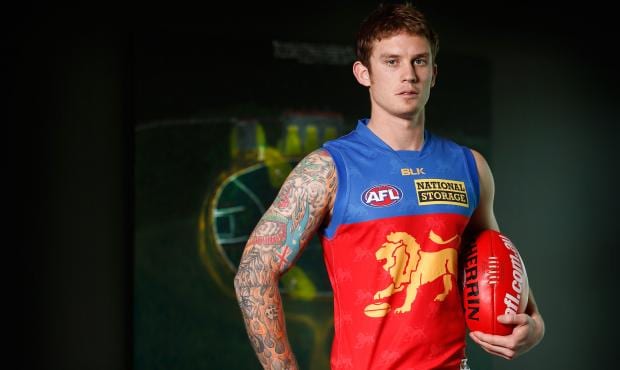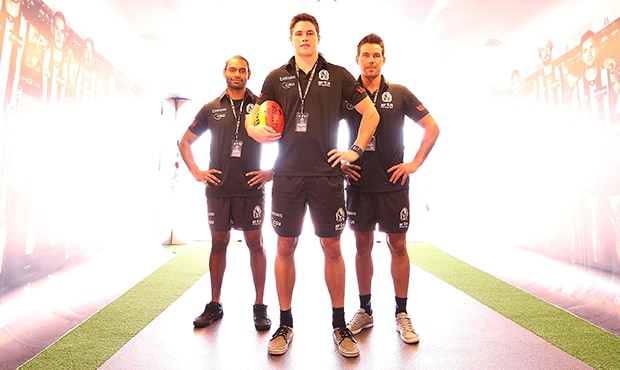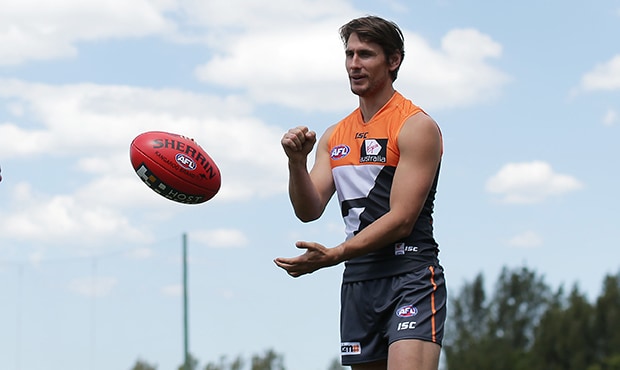A RECORD eight players changed clubs during this season's trade period immediately after finishing in the top 10 of their club best and fairest.
The figure underlines why the trade period was considered one of the most tumultuous in the game's history, with the number of quality players leaving so soon after such strong seasons on the field, at an unprecedented level.
Dayne Beams, Heritier Lumumba, Paddy Ryder, James Frawley, James Gwilt, Levi Greenwood, Ryan Griffen and Joel Patfull all finished in the top 10 of their 2014 club best and fairest before moving clubs.
Three of those players had previously won club best and fairests, with Griffen also being a club captain.
Griffen became just the 11th man to change clubs as captain since Ron Barassi shocked the football world in 1964 when he left Melbourne for Carlton.
Add Adam Cooney, Allen Christensen, Travis Varcoe, Mitch Clark and 2013's No.1 pick Tom Boyd to the list of names trading places and the quality metre heads skyward.
All had different reasons to want to switch clubs, with many facing off-field circumstances that necessitated change in their opinion.
Greenwood was out of contract and Frawley and Gwilt were free agents.
But Collingwood coach Nathan Buckley was blunt this week when asked about the events of the previous fortnight.
"There is no doubt there is a changing landscape and a changing environment,” he said.
The trend of top players moving began with the advent of free agency, with five players from the top 10 of their club’s best and fairest moving at the end of 2012 and four in that category changing clubs at the end of 2013.
In 2014 another element came into play with star players requesting trades despite having at least one season remaining on their contract.
Dayne Beams left the Pies after finishing third in Collingwood's best and fairest count. Picture: AFL Media.
Just two of the eight players were free agents whereas six of the nine in the previous two years were free agents.
What happened before 2012 underlines further the shifting landscape.
In the six years before 2012 a combined total of just eight players (the same figure as this season alone) moved clubs in the same year in which they finished in the top 10 of their club best and fairest.
It is rare for the most successful clubs during recent seasons to lose such players at all.
Of players who finished in the top 10 of Geelong's best and fairest since 2002, only two (Gary Ablett and Paul Chapman), have left to play with another team.
Only Lance Franklin and Campbell Brown have left Hawthorn after playing well enough to finish in the top 10 of the club's best and fairest since 2010 (although Josh Kennedy and Ben McGlynn have starred at their new club) while the Sydney Swans have only lost Darren Jolly (for personal reasons), Amon Buchanan and Nick Malceski since its 2005 premiership from that feted best and fairest list.
By contrast Collingwood has lost four such players since 2013 who previously finished top 10 in the club best and fairest. Beams became the first best and fairest winner to leave the Pies since 1995 winner Saverio Rocca joined North Melbourne in 2001.
Dale Thomas, Heath Shaw, Lumumba and Beams had nine top-10 finishes between them since the 2010 premiership year and are now with other clubs.
Amazingly, six players who finished in the top 10 of Melbourne's 2010 best and fairest count – James Frawley, Colin Sylvia, Cameron Bruce, Brent Moloney, Tom Scully and James McDonald – joined other clubs in the five trade periods that occurred after that count.
Magpies Travis Varcoe, Jack Crisp and Levi Greenwood show off their new colours. Picture: Getty Images.
It also lost Stefan Martin – eighth in the 2011 best and fairest count – to the Brisbane Lions meaning it has lost seven players with 15 top 10 finishes between them since 2010.
With Nick Malceski departing the Swans for Gold Coast as a free agent this season, the Suns are the only club since 2010 to not lose a player who has finished top 10 in its best and fairest to another club.
The best players are on the move and clubs are going to have to find ways to attract or retain them.
It means they will need to be clear about what makes them an attractive destination for players at particular points in their career: opportunity, profile, relative anonymity, big crowds, big money, on-field success, a good working environment or opportunities outside of football.
Clubs are going to have to consider how they structure contracts in the future with an increasing number of short term contracts a counterweight to the fortunate bunch locked into longer contracts.
The clubs that can best assess the future value of the talent available will prosper as clubs have success when their player payments allow a spread of talent within the club, rather than a few high priced recruits.
And supporters will need to be brought along with the change to ensure the connection between fans and clubs does not become as easily discarded as the jumper number of their favourite player.
New Giant Ryan Griffen finished third in the Dogs' 2014 best and fairest count. Picture: Getty Images






